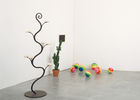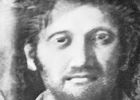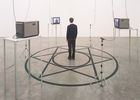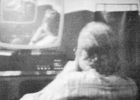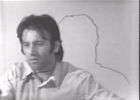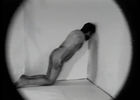Peter Weibel
Biographie
Peter Weibel was born in Odessa/Ukraine in 1944. He studied literature, medicine, logics, philosophy, and film in Paris and Vienna. From 1992 until 1995 was Peter Weibel artistic director of the Ars Electronica. 1992 until 2011 he was chief curator at the Neue Galerie in Graz. From 1993 until 1999 he curated the Austrian Pavilion for the Venice Biennials. 2008 he curated the International Biennial of Seville and 2011 the 4th Moscow Biennale. He was awarded the Generali Foundation’s sculpture prize (1991), the Siemens media art prize (1997), the Käthe-Kollwitz-Prize (2004) and the European Culture-Project-Prize of the European Culture Foundation (2009). Peter Weibel taught at numerous international institutions including the University of Applied Arts, Vienna, the College of Art and Design in Halifax, Canada and the Comprehensive University in Kassel. He was Associate Professor for Video and Digital Arts at the Center for Media Study of the State University of New York in Buffalo, N. Y for five years. Currently he is director and member of the board of directors of the Center for Art and Media Technology (ZKM) in Karlsruhe, Germany, where he lives since 1999.
Additional biography
It was Weibel who introduced the concept of "expanded cinema" towards the end of the 1960s. Together with artists such as VALIE EXPORT and Ernst Schmidt jr., he set about deconstructing the medium of film and its special characteristic signs and signifiers with the help of actionist elements. Thus he had his film "welcome" (1964-66) projected onto his own chest and back, while in his "expanded movie" "nivea" (1967) both the actual object and its shadowy projection were employed to reveal the true nature of the cinematic device. At this time, Weibel also staged his "Action-Lectures," performative transformations of his theories. In his theoretical writings and in his artistic work alike Weibel pursues an analysis and exposure of both the power mechanisms inherent in language and the ideologies underlying them, especially in information transmitted by the media. Towards the end of the 1960s, he began to increasingly integrate linked and networked communications apparatuses into his "Action-Lectures." He directed his attention to the mass medias of television and video, which, owing to their process-oriented character and alterable spatial-temporal conditions of reception, he saw as having con-siderable critical and educational potential. During this time, Weibel’s "Tele-Actions" were created as were his closed-circuit installations, often in cooperation with European television companies. They include "Observation of the Observation: Indefiniteness" (1973), a complex attempt at coming to terms with the processes involved in finding one's identity, as conveyed through the media, but also with surveillance as enacted via the media. In his more recent multi-media works, interactivity and virtuality, the shapes of images altered by electronic media and their utopian potential in relation to our perception, have also continued to be central. (Claudia Slanar)
Artist's books
- EXPORT, VALIE. Acta Occidentia Scientia. Projekt Studie alpha) Zeitstruktur: Identität. Linz: Kursiv Kunstbuch, 1997.
KM EXPORT VALIE 15 RARA - - Die Schastrommel. Organ der österreichischen Exilregierung, Nr. 7 (März 1972).
ZS Schastrommel RARA -
